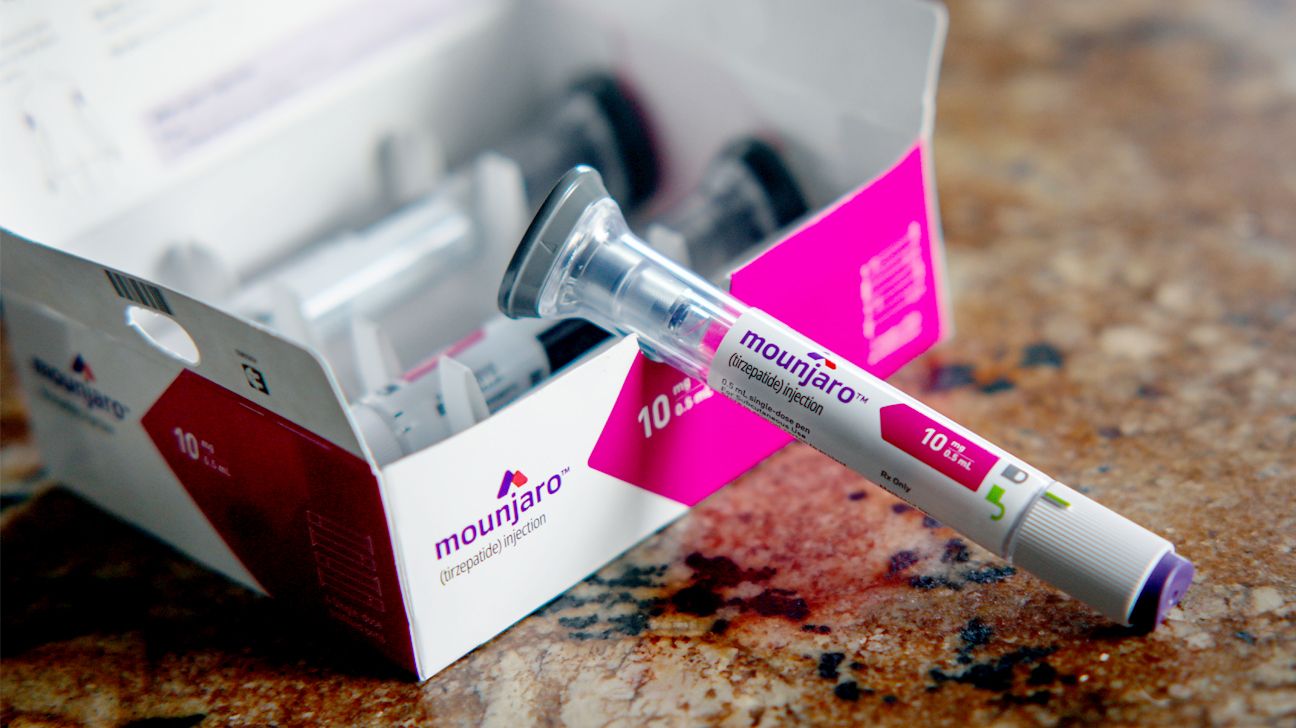Pairing Drugs Like Ozempic with SGLT2 Meds May Help Reduce Heart Attack, Stroke Risks

- Two classes of diabetes drugs may also improve cardiovascular and kidney disease outcomes in people with or without diabetes.
- In a meta-analysis involving more than 70,000 patients with diabetes, SGLT2 inhibitors reduced the risk of heart attack, stroke, and kidney disease progression.
- When paired with a GLP-1 drug, the benefit increased.
Two classes of diabetes drugs show health benefits far beyond improving blood sugar. When used together, their effects are even more evident.
For individuals with type 2 diabetes, SGLT2 inhibitors lower blood sugar by preventing the kidneys from reabsorbing glucose; the excess sugar is instead excreted through urine. But they do more than that. Large trials suggest that SGLT2 inhibitors reduce the risk of kidney disease, heart attack, and stroke not only in patients with type 2 diabetes, but also, those without.
If you’ve been following the trajectory of another well-known class of diabetes drugs, this might sound familiar.
The health benefits of GLP-1 drugs, the class of diabetes and obesity medications that includes Ozempic, Wegovy, Mounjaro, and Zepbound, have also grown to include improving outcomes for cardiovascular disease, heart failure, and chronic kidney disease.
New research published this week in The Lancet Diabetes & Endocrinology now indicates that both classes of drugs used together may yield even more protective benefits than individually.
“What we found was clear and additional benefits of SGLT2 inhibitors when used in combination with GLP-1 receptor agonists, benefits on cardiovascular disease, benefits on kidney disease progression, and also no increased risk of side effects or safety issues when used in combination,” Brendon Neuen, PhD, a Clinical Associate Professor of Medicine at Royal North Shore Hospital in Sydney, Australia, and co-author of the study told Healthline.
Robert A. Gabbay, MD, PhD, Chief Scientific and Medical Officer for the American Diabetes Association, lauded the study, saying, “This adds to the growing body of evidence showing the benefit of these two important classes of medicines and that their benefits can be additive.”
Gabbay and the ADA were not involved in the research.
Kidney and CVD benefits of SGLT2 inhibitors
Neuen and his team conducted a meta-analysis of 12 randomized, double-blind, placebo-controlled trials — the “gold standard” for research trials. The analysis included data from more than 70,000 patients with diabetes. A small cohort of those patients, about 3,000 (4.2%), were being prescribed a GLP-1.
The researchers were curious whether or not the cardiovascular and kidney protective effects of the SGLT2 inhibitors would persist across the available data, and how the addition of a GLP-1 would alter those effects.
Not only did the protective benefits of the SGLT2s persist with or without the presence of a GLP-1, but when the two were paired, the benefits were even greater.
The study examined a myriad of serious health issues that are known comorbidities of type 2 diabetes. These outcomes include the risk of major cardiovascular events (heart attack and stroke), hospitalization for heart failure, or death from cardiovascular disease.
Chronic kidney disease progression was also explored, which the team defined as a 40% or more decline in eGFR (a standard measurement of kidney functioning), kidney failure, or death due to kidney functioning.
Compared to a placebo, an SGLT2 by itself reduced the risk of heart attack and stroke by 11% and hospitalization for heart failure or cardiovascular death by 23%. The effects on kidney disease progression were even more pronounced: an SGLT2 yielded a reduced risk of 33% compared to a placebo.
For each outcome, the addition of a GLP-1 resulted in an additional small reduction in risk. For cardiovascular disease-related hospitalizations and kidney disease progression, a GLP-1 further reduced risk by about 2%. For major cardiovascular events, a GLP-1 nearly doubled the protective effects, reducing risk by an additional 10%.
Safety and tolerability were also consistent when an SGLT2 was used individually or paired with a GLP-1, meaning there was not an increased number of adverse events when the drugs were used together.
“These data provide the strongest evidence that we have yet that using these two medications in combination is not only safe but highly effective and is likely to improve clinical outcomes for people with type 2 diabetes who have cardiovascular kidney disease,” said Neuen.
A new era of diabetes management
The study is likely to grab the attention of doctors and healthcare organizations who are still evaluating and creating guidelines for these two relatively novel classes of drugs. The FDA first approved SGLT2 inhibitor, Invokana (canagliflozin), in 2013. GLP-1 drugs have been available for nearly 20 years, but have only recently taken the industry by storm due to blockbuster drugs like Ozempic and Zepbound capturing the attention of the public.
“In the new era of diabetes management where we have available medications such as GLP-1 receptor agonists and SGLT2 inhibitors, the goal is to understand which patient could benefit most from which treatment or treatment combination,” Mona Mashayekhi, MD, PhD, an Assistant Professor of Medicine in Diabetes, Endocrinology and Metabolism at the Vanderbilt University Medical Center who wasn’t affiliated with the study, told Healthline.
For patients with type 2 diabetes who are at risk for or already have comorbidities like kidney disease, heart failure, or cardiovascular disease, it appears there is a new world of potential in these drugs. Even for patients without diabetes, the benefits of GLP-1s and SGLT2s are a promising development.
“These medications are now recommended in people with heart failure and kidney disease, even if they do not have diabetes, because they have clear and important, clinically important benefits in preventing kidney failure and heart failure outcomes,” said Neuen.
The bottom line
In a meta-analysis involving more than 70,000 patients with diabetes, SGLT2 inhibitors improved outcomes for cardiovascular events like heart attack and stroke, hospitalizations, and kidney disease progression.
When an SGLT2 inhibitor was paired with a GLP-1 (the class of drugs that includes Ozempic and Mounjaro), there was an even greater reduction without any additional safety issues.
Experts told Healthline that the findings will help to better inform doctors about treating patients with certain comorbidities, including kidney disease and heart disease.







